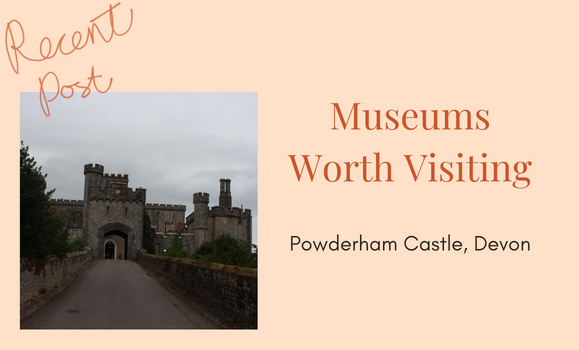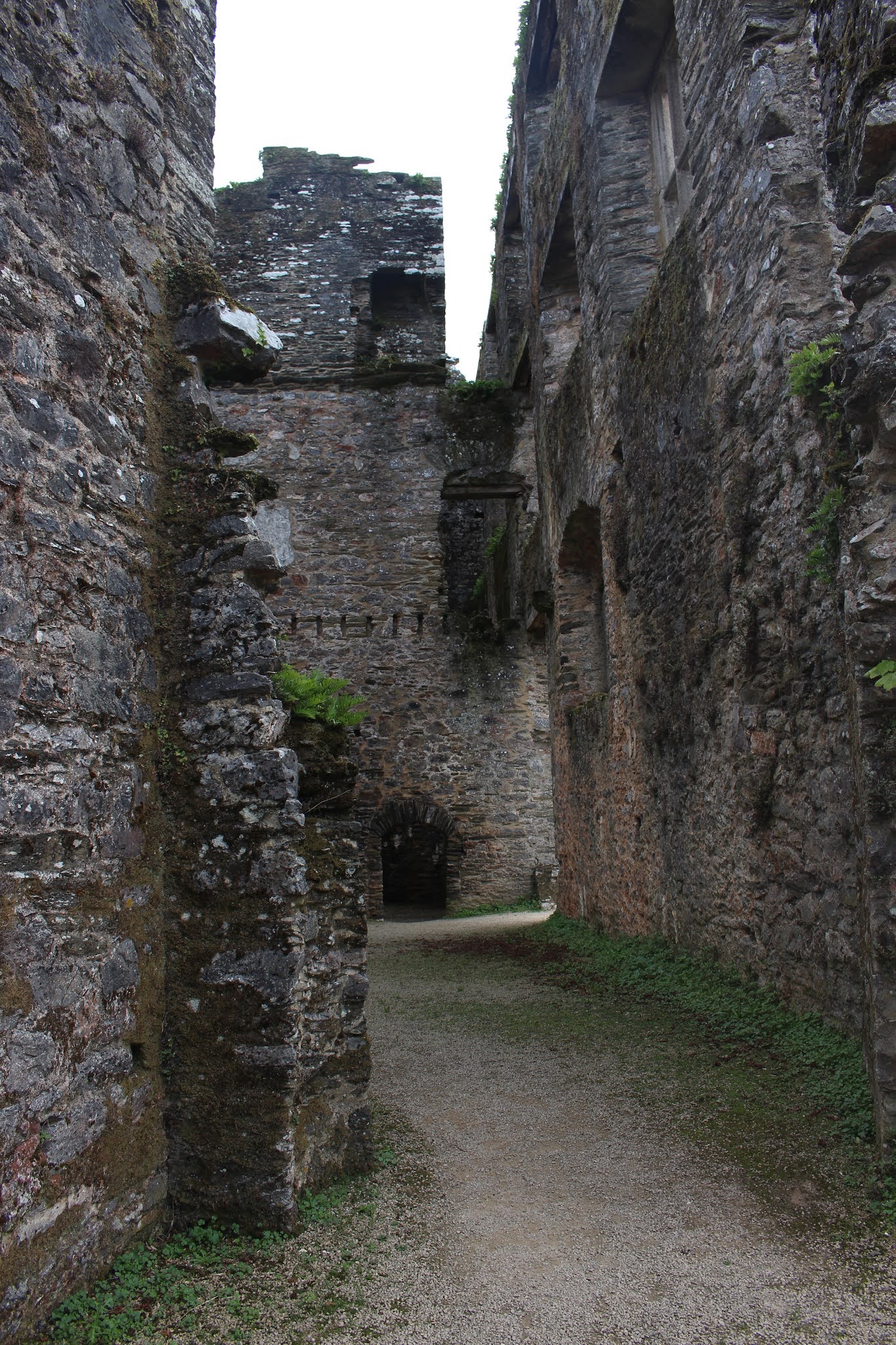Berry Pomeroy Castle
In an attempt to soak up some local history, I recently took a visit to Berry Pomeroy Castle, Devon. The castle stands on a spur above Gatcombe Valley and is set against a deep woodland.
The Pomeroys
The first owner of the manor or Berry was Ralf de Pomaria who was a knight from La Pommeraye in Normandy, France. He was granted the manor, along with 56 others in Devon, by William the Conqueror. It is believed that this may have been a reward for his service at the siege of Exeter in 1068. According to the Domesday Book, compiled in 1086, the manor of 'Beri' was worth approximately £12 per year, which was a 1/3 more than the nearby Totnes Castle. The manor consisted of 78 households, meaning that it's population was approximately 400.
Ralf did not establish a castle here. However, a parish church was established along with a manor house beside it that would become the main residence for his family for the next 400 years. In 1207 Henry Pomeroy formed a deer park on the grounds where the castle was eventually built. By 1293 the Pomeroy's village manor house here was the most important residence on their estates and was still in full use in 1496.
 |
| The Castle's Gatehouse |
The exact date of when the castle was built is still unknown as its existence wasn't recorded in the estate surveys of 1446 or 1461 but did appear on records in 1496 when Sir Richard Pomeroy died and was recorded as owner of the "honour, castle and manor of Bury". When archaeologists have examined the castle they confirm that it was built no earlier than the late 15th century and the fact that the gatehouse has gun ports confirms this as they were a very advanced design for their time.
It's likely that the castle was constructed as a defence mechanism as a result of the violent few decades during the War of the Roses (1455-1487). From 1461 Henry Pomeroy owned the castle and was a prominent Yorkist supporter. His son Sir Saintclaire Pomeroy died of wounds at the battle of Tewkesbury (1471). Around this time, Devon was the most lawless place in the south of England due to feuds between and within landowning families. Such tensions and violence would have made it very clear to the Pomeroys that a defensive castle was needed much more than a manor house.
It is also possible that Henry's second son, Richard either built or completed the castle. This is considered more likely since the castle's artillery defences were similar to those at the nearby Dartmouth Castle which was built in the 1480s. There is also a painting inside the castle gatehouse which is said to have been painted in the late 15th century.
 |
| The 15th Century painting inside the gatehouse which is still visible today. |
The Seymours
In December 1547, Berry Pomeroy was purchased by Edward Seymour, the first Earl of Hertford and first Duke of Somerset. Seymour was the brother of Henry VIII's third wife, Jane Seymour who died in 1537. Henry VIII also died in 1547 making his 9 year old son Edward the new King of England and Edward Seymour the Lord Protector of the young king.
Protector Seymour enjoyed collecting estates so show his vast wealth and power. Berry Pomeroy was in fact his single most valuable acquisition, producing revenues of approximately £210 per year. However, this power that he was trying to show of did not last long at all. He was deposed as protector by the Duke of Northumberland in 1549 and executed in 1552, meaning there's a good chance that Seymour never actually visited the castle.
Protector Seymour's son, who was confusingly also called Edward Seymour, inherited his Father's main titles and estates which included Berry Pomeroy. Edward had an initially very successful career, being knighted aged 18 after participating in the victory at the Battle of Pinkie in 1547 but this became overshadowed by the downfall of his father, during which time he spent some time in the Tower of London. By 1558, things had turned around. With the help from Sir John Thynne, builder of Longleat, he was able to re-acquire Berry Pomeroy and associated estates.
In the 1560s, they erected an Elizabethan mansion within the castle's defences. The mansion contained two floors of accommodation and two floors containing the hall and services. It was one of the first hunting style lodges that was built and became very popular around this time. By 1570s the house at Berry Pomeroy became Edward's main residence.
Berry Pomeroy was inherited in 1593 by Edward Lord Seymour's son who was called, yes you guessed it - Edward! He is commonly know was Edward Seymour II and was very active in Devon's political landscape, serving as an MP in 1593, 1601 and 1604. It was during Edward Seymour II's ownership of Berry Pomeroy that it was transformed on a massive scale to try and rival Longleat and Audley End and become the grandest house in Devon. The works involved demolishing the the north range of the house and replacing it with a grand staircase and galleries which led to luxurious new rooms. There were several chambers that contained delicately carved and polished marble and alabaster features. However, as tends to happen with such an ambitious project, funds soon dwindled and the project was abandoned. The Seymours continued to live at Berry Pomeroy until the late 17th Century.
This is only a very brief overview of Berry Pomeroy castle so would highly recommend paying a visit to the castle if you're ever in the area.








